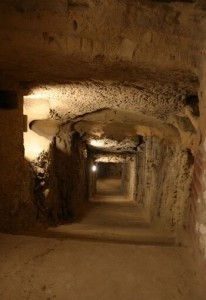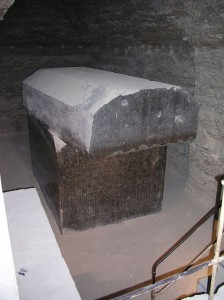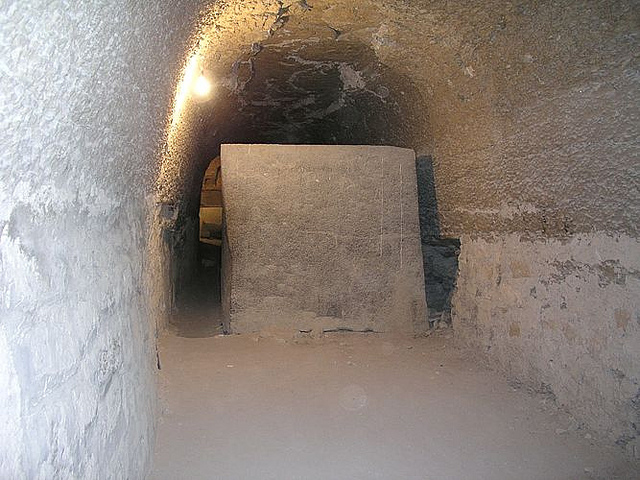On of the most fascinating features of the Serapeum at Saqqara are the astonishing sarcophagi, measuring 4m long, 2.30m wide, 3.30m high and each weighing over 80 tons. The are twenty four of them and each made from one piece of granite.
The Serapeum is an underground development comprising a complex network of narrow tunnels within which the large sarcophagi are located. It is baffling to think how these sarcophagi were ever moved and positioned within such a tightly confined space. Two of the sarcophagi have inscriptions, but these are poorly drawn as though addded later by someone very inexpert in the task, unlike to sarcophagi which are superbly made with great skill in stonework. The others are totally smooth in finish. All of them are carved from a single block of granite. The corners are perfect inside and out, and the sides are said to be exactly parallel. Apparently there are notches that allow the 4.30m wide lid to be rotated sideways on its central axis and to remain in position on the edge of the sarcophagus. This indicates that the sarcophagi were used open as often as closed.
Much is said in support of the idea that these contained mummified bulls. Cult worship of the bull had gone back many years in Egypt, perhaps back to the pre-dynastic period of Naqada (4000-3000 BC). However, when discovered, there was no reported any remains of the mummified bulls.
 A definitive date fpor the building of the Serapeum remains uncertain.
A definitive date fpor the building of the Serapeum remains uncertain.
 How were the sarcophagi were made with such expert precision?
How were the sarcophagi were made with such expert precision?
When were they made?
How were they hauled and maneuvered into place when the space was so tight for them?
Photo credit: pyramidtextsonline / Foter / CC BY
Link: Ancient History – Serapeum at Saqqara , A Fascinating Place
